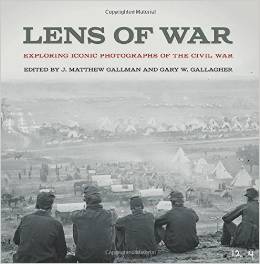California and the Civil War by Richard Hurley. History Press, 2017. Paper, ISBN: 978-1625858245. $21.99.
 Richard Hurley, an active popular and public historian, has provided an engaging and accessible primer to the complexities of California and its role in the sectional crisis, the Civil War, and the dawning of the Gilded Age. In the brief space of 144 pages, California and the Civil War accomplishes quite a lot. The early chapters lay out the diverse array of California’s Indigenous peoples and numerous newcomers: including Mexican Californios, Southern transplants, and international gold-seekers. Hurley argues that the state’s diversity, coupled with the acrimony of its entrance into the Union through the Compromise of 1850, made California a microcosm of political and cultural divides that wracked the United States in the build-up to the fratricidal conflict. Initially strongly aligned with Southern politics through organizations such as William Gwin’s Chivalry, a breakdown of civility—signaled by the murder of Free Soil Senator David Broderick in a duel in 1859—cast California into disarray.
Richard Hurley, an active popular and public historian, has provided an engaging and accessible primer to the complexities of California and its role in the sectional crisis, the Civil War, and the dawning of the Gilded Age. In the brief space of 144 pages, California and the Civil War accomplishes quite a lot. The early chapters lay out the diverse array of California’s Indigenous peoples and numerous newcomers: including Mexican Californios, Southern transplants, and international gold-seekers. Hurley argues that the state’s diversity, coupled with the acrimony of its entrance into the Union through the Compromise of 1850, made California a microcosm of political and cultural divides that wracked the United States in the build-up to the fratricidal conflict. Initially strongly aligned with Southern politics through organizations such as William Gwin’s Chivalry, a breakdown of civility—signaled by the murder of Free Soil Senator David Broderick in a duel in 1859—cast California into disarray.
The second half of Hurley’s volume is heavily biographical. It divides its attention between the tumults of California’s home front, internal politics, and the various theaters of combat. In a concise fashion, Hurley details the contributions of Californians to the Union effort, those who defected to Confederate loyalties, and the ascendancy of Leland Stanford and the Republican Party in state politics following secession.
Hurley’s strongest contributions lie within his treatment of the Civil War’s impact upon Indigenous peoples throughout California and the West, and concluding chapters on the legacy left behind in California by the Civil War. Wartime mobilization of militias in California and elsewhere amplified violence between whites and Indigenous peoples, from the Columbia River Plateau to the New Mexican desert. The rise of the Republican Party and the Civil War, furthermore, laid the crucial foundation for construction of transcontinental railroads, which ultimately terminated in Sacramento, San Francisco, and Los Angeles. Hurley effectively presents the Civil War as an important precursor to the violent and rapid settlement and modernization of the postbellum American West. Additionally, adding to the book’s value as an introduction to California’s Civil War history, Hurley has included an extensive and useful annotated bibliography.
Despite the numerous things this volume does well, there are also important issues that are skirted or left unaddressed. The treatment of slavery and the extent of its political controversy is present, but muted—confined to the “national,” constitutional debate over slavery and secession. More distinctly “Western” inflections of the slavery controversy, including filibustering and fears of a slave power conspiracy, are either barely treated or left out entirely. The ambitions of the Chivalry get disconnected from broader Southern dreams for slavery in the Western empire. Presenting California as a border state with competing Union and Confederate interests lays out the state’s internal divides, but also pulls California from its native context within the West. It likewise loses grasp of the extent to which the chant of “Free Soil, Free Labor, Free Men” held the region in its view.
Aaron Hyams, Ph.D., is a visiting assistant professor of history at Sam Houston State University.




